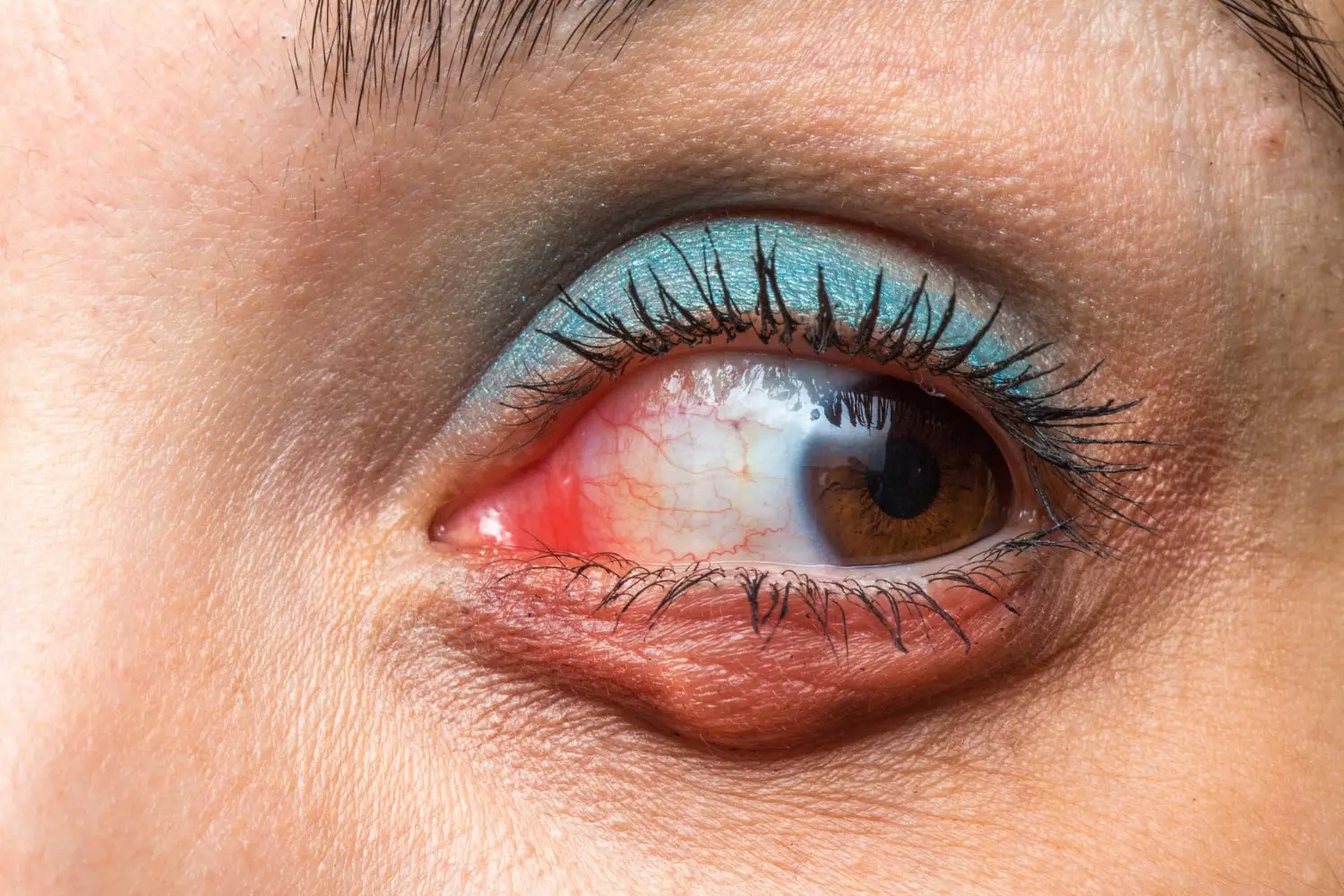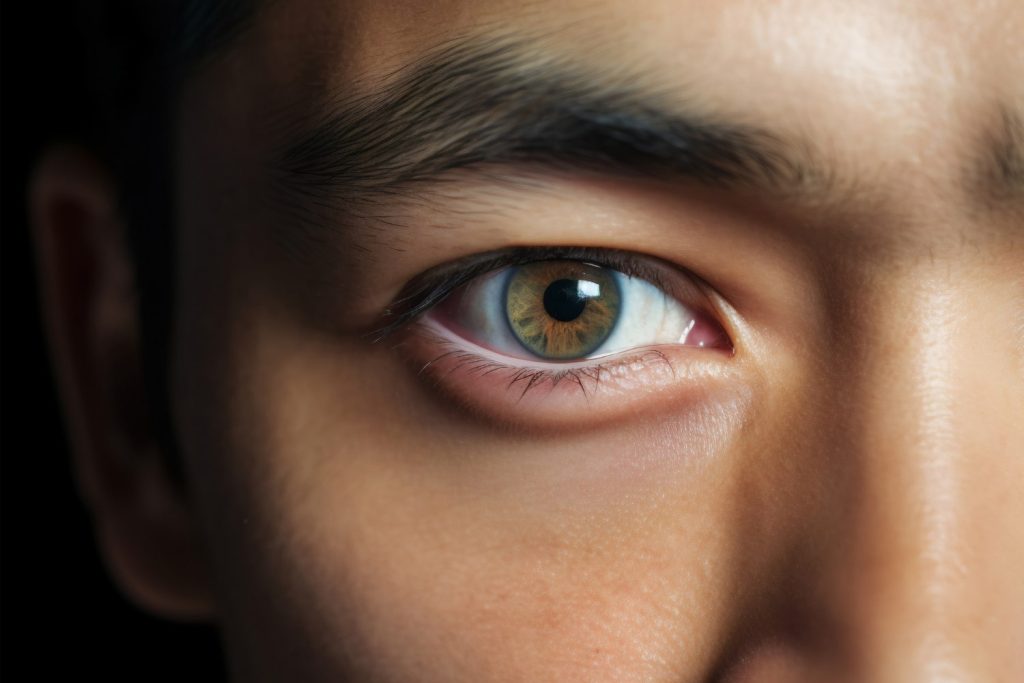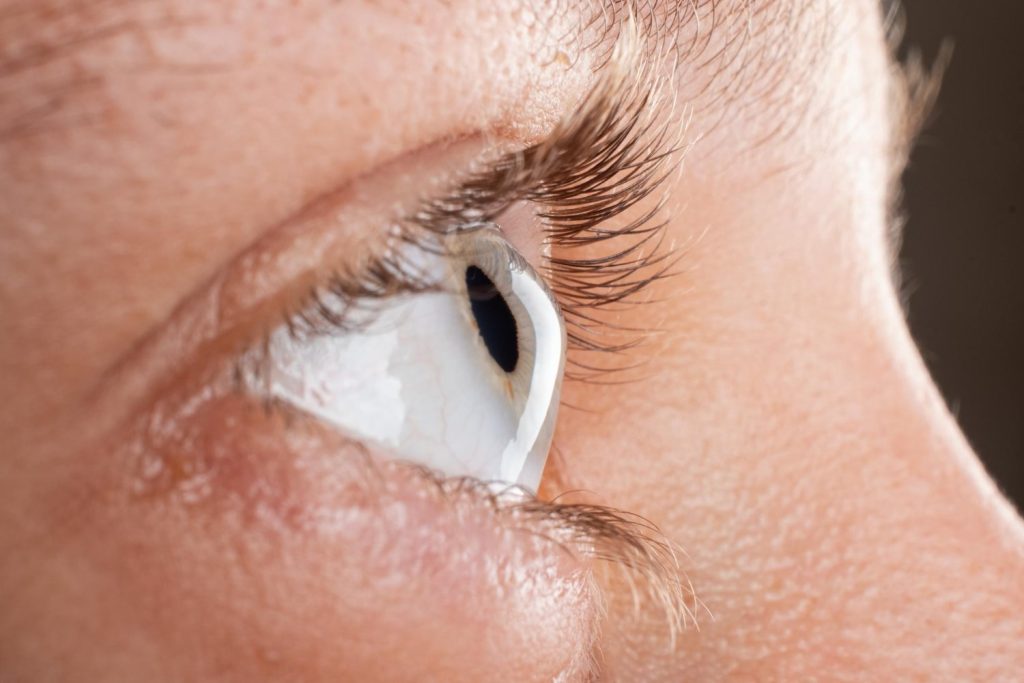
טיפות דמעות – מה זה ולמה משתמשים בהן?
טיפות דמעות הן תמיסות רפואיות או קוסמטיות שמטרתן להקל על
Swelling of the lower eyelid, often referred to as "lower eyelid edema", is a common symptom encountered both in clinical practice and in everyday life. This can manifest due to a wide variety of factors, from mild allergies to severe infections or systemic diseases. This swelling can be both worrisome and uncomfortable for the person, with cosmetic concerns being the least of medical concerns, especially when associated with pain, redness, itching, or changes in vision.
Understanding the anatomy and potential causes of this swelling is critical not only for healthcare professionals but also for the general public. Comprehensive awareness enables early detection, appropriate intervention and prevention of possible complications.

The eyelid is a complex structure designed not only to protect the eye from external threats but also to help lubricate the surface of the eye. It consists of a variety of layers and components, each with a specific function.
Skin and tissues under the lower eyelid
The outermost layer of the eyelid is the skin, which is extremely thin and elastic to accommodate the opening and closing of the eyes. Under the skin is hidden the subcutaneous connective tissue containing a rich network of blood vessels, nerves and fat pads that provide structure and protection to the eye.
Structures of muscles and glands in the lower eyelid
The main muscle responsible for closing the eyelids is the orbicularis oculi, while the levator palpebrae superioris helps lift the upper eyelid. Embedded within the eyelid are the tarsal (or meibomian) glands, which secrete a fatty substance that prevents the tear line from evaporating too quickly. In addition, there are smaller glands, such as the sweat glands and the mammary glands.
Blood and lymph supply in the lower eyelid
The eyelids receive blood from both the internal and external carotid arteries, with branches such as the ophthalmic and lacrimal arteries playing key roles. Venous drainage occurs mainly through the eye vein. The lymphatic vessels in the eyelids help remove cellular debris and excess fluid. Swelling often results when there is a disturbance in the balance of fluid flow and emission in these vessels.
Swelling of the lower eyelids can bother those who experience it. The swelling may range from mild swelling that is barely noticeable to significant and painful swelling. Here are some of the most common reasons:
Allergies in the lower eyelid
Allergic conjunctivitis: Triggered by allergens such as pollen, dust or pet dander, it can cause itching, redness and swelling of the conjunctiva and eyelids.
Contact dermatitis: skin reactions to irritants or allergens such as makeup, eye drops or contact lens solutions can cause red, swollen and itchy eyelids.
Lower eyelid infections
stye in the eye: Bacterial infection of an oil gland or hair follicle on the eyelid, leading to a painful, red lump.
Chalazion: results from blockage of an oil gland, creating a lump. Although initially painless, it can become inflamed and swollen.
Cellulitis: A more serious infection that affects the deeper layers of the eyelid. It is often painful and requires immediate attention.
Injuries and trauma: Physical trauma or injuries, including insect bites or blows to the eye area, can cause localized swelling.
Fluid retention in the lower eyelid
Salt consumption and fluid balance: excessive salt consumption can cause fluid retention, leading to general swelling in the face and eyelids.
Systemic causes: conditions affecting the heart, liver or kidneys can lead to fluid retention and subsequent swelling of the eyelids.
Systemic diseases involving the lower eyelid
Thyroid-related eye disease: Swelling can occur due to Graves' disease, an autoimmune condition that affects the thyroid gland.
Nephrotic syndrome: Kidney conditions can lead to protein loss, causing swelling around the eyes.
Aging and cosmetic concerns: As we age, the tissues and muscles around the eyes weaken, leading to the accumulation of fat and fluid, which causes bags under the eyes.

Finding out the cause of the swelling is crucial in its management.
Here's how healthcare professionals typically refer to the diagnosis:
clinical examination
imaging techniques
Laboratory tests
Treatment of lower eyelid swelling depends on identifying and managing its cause.
Some treatments are specific to the underlying condition, while others focus on providing symptomatic relief:
Grandma's medicine
Cold compresses: Applying a cool washcloth or cold spoon can help reduce swelling and soothe irritation.
Over-the-counter treatments: Over-the-counter antihistamine eye drops or ointments can relieve allergy-related symptoms.
Reducing salt intake: reducing salty food may help reduce fluid retention that contributes to eyelid swelling.

Antibiotics: For bacterial infections such as stye or cellulitis, topical or oral antibiotics may be prescribed.
Steroid treatments: Corticosteroid creams or drops can reduce inflammation, especially in cases of allergic reactions or certain systemic conditions.
Surgical drainage or removal: In the case of a large chalazion or abscess, surgical intervention may be necessary.
Contraceptive measures
Eye hygiene: regular cleaning of the eyelids with baby shampoo or special cleaning agents can prevent blockages that lead to stye in the eye or calcification.
Protective clothing: using protective glasses can prevent trauma or exposure to allergens.
Regular medical examinations: Periodic visits to the eye doctor can help detect and manage problems before they escalate.
If left untreated or inadequately managed, lower eyelid swelling can lead to various complications:
Persistent swelling and scarring: Chronic inflammation can lead to persistent swelling and, in some cases, the formation of scar tissue, which can affect the function of the eyelids or their appearance.
Spread of infection: Conditions like cellulitis can spread to surrounding tissues, which can lead to a more serious infection called orbital cellulitis. This condition can affect the eye socket and in rare cases spread to the brain.
Vision problems: Prolonged swelling, especially when associated with systemic disease or trauma, can cause vision problems, including double vision or even vision loss.
Case studies provide context and real-world insights into how lower eyelid swelling can manifest, diagnose and manage:
Mild allergic reaction leading to swelling

Swelling of the lower eyelid, although common, has a wide variety of potential causes, ranging from benign allergic reactions to more serious infections or systemic conditions. Recognizing the importance of the complex anatomy of the eyelid and the interplay between various factors leading to swelling is essential for accurate diagnosis and effective management. Through understanding and awareness, both patients and healthcare professionals can collaborate to ensure early detection, appropriate intervention, and prevention of potential complications. Regular examinations, a proactive approach to eye health and immediate attention to any abnormalities remain paramount in ensuring the well-being of eye health.

טיפות דמעות הן תמיסות רפואיות או קוסמטיות שמטרתן להקל על

ויטמין C הוא אחד הוויטמינים החיוניים ביותר לבריאות העיניים, הודות

מרכז מומחים לאבחון וטיפול מתקדם בתסמונת העין היבשה ומחלות פני שטח העין















